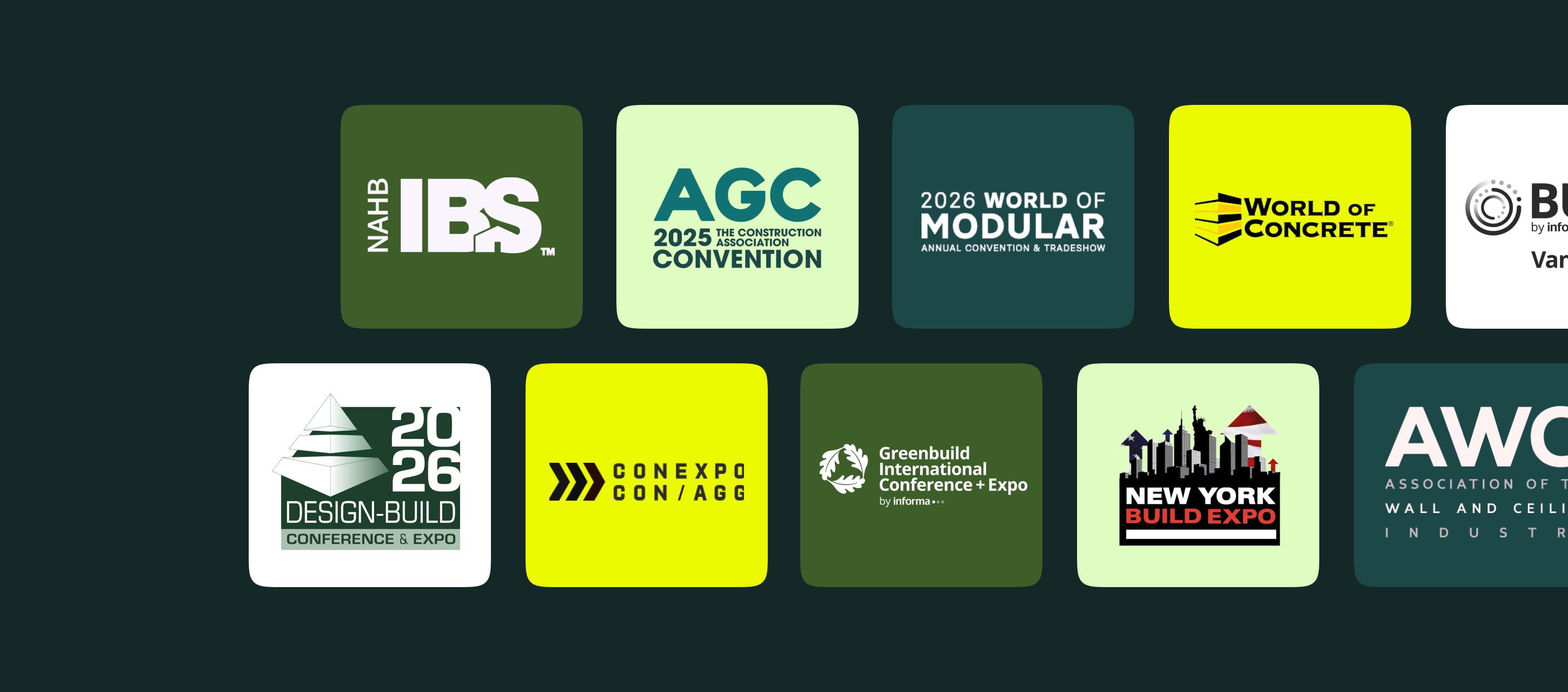So far, 2020 is all about disrupting industries and thinking “lean”. The common thread between these concepts is business process transformation – addressing process and productivity flaws and making positive changes that will help you to transform and grow your business in a sustainable way. There is a wealth of information available for dissection, and if we dig through the buzzwords to get to the heart of things, there are some genuinely innovative movements and technologies that are shaking the foundations of the construction industry.
We’ve detailed 4 of our favorite Construction Industry Game Changers below:
- The Eruption of Disruption
Disruption is one of those hot new words that everyone seems to be throwing into the conversation mix this year, but what does it actually mean?
In the business world, to disrupt something means to change the traditional way that an industry operates, and to highlight new and effective ways of doing things. For the construction industry, the emergence of new technologies and software have both arguably been the most disrupting factors to date. Embracing the power that construction field business software has to offer has made it easier than ever for companies in the construction industry to align efficiency with productivity, as well as opening channels for company-wide collaboration and improved communication.
Project process automation and field collaboration are two areas that are currently in the spotlight, with McKinsey recently listing digital collaboration and mobility among its top 5 big ideas that are poised to disrupt construction. Hardware has also advanced alongside the technology that powers it, with “rugged”/drop-proof tablets now equipped to handle pretty much all of the scrapes, accidental drops, and extreme temperatures that the construction industry can throw at them. This has enabled the seamless digitalization workflows for field workers, which has been another much-needed disruption in the industry.
At a local, grassroots level, disruption can be simplified for small to medium-sized businesses, so don’t be discouraged by its ‘larger-than-life’ reputation. As long as you’re innovating, improving, and embracing change, you’re naturally disrupting things and forging a path for future business growth! - Thinking Lean in Construction Project Management
In bygone days, the terms “cost-effective” and “lean” almost always evoked negative connotations. Not only did it imply the use of cheap materials, but also a finished product that would be of lesser quality than one funded by a large-scale budget. Both terms have seen a revival in a much more positive light in recent years, with “lean” now synonymous with Lean Six Sigma; a methodology founded on the principles of eliminating waste and redundant process steps, as well as optimizing time and the efficient use of skilled labor.
Construction companies have benefited by shifting their attitudes from a purely fiscal standpoint to adopting a customer-first approach to develop an understanding of what quality process control really means. This forward-thinking approach reaps many rewards, and it’s also one of the key principles of Lean Six Sigma. In short, if your company has a customer-centric approach, you’re already embracing a core component of the methodology.
When we look at optimizing process efficiency and eliminating waste, we quickly see that we can apply those principles to construction management projects. This can be seen in the popularity of timber-frame “Eco” houses, shipping container remodeling, and modular construction – all of which challenge archaic misconceptions of value, and prove that high-quality doesn’t necessarily have to come at a high cost.
For example, the Marriott Hotel Group is making headlines with its plan to build the world’s tallest modular hotel in New York City. The project is a mammoth task, but by utilizing efficient process management in modular construction, an entire floor can be completed in just one day! Marriott put its franchisees first by choosing construction methods that would save them money and help them to avoid costly delays.
Applying lean principles to construction project management can also provide critical insights to process flaws that will enable your business to identify improvements — leading to favorable economies of scale and allowing time and money saved to be invested elsewhere. Something as simple as eliminating just one unnecessary step in a process could have a substantial positive impact. The principles aren’t overly difficult to apply, it’s just a case of making it a priority to embrace them. - Deep Diving: Turning Data Into Dollars
We’ve mentioned in previous posts about the importance of leveraging data, and how it can help construction companies make sound, intelligent business decisions. Data deep dives are a next-level method of collating and interpreting data. So, how exactly do you conduct a deep dive, and how can you turn what you gather into actionable insights that drive business process transformation?
A data deep dive involves having an in-depth discussion about your company processes, construction management workflows, and time usage — analyzing it “under the microscope” for efficiency or lack thereof. Turning this qualitative data into something more quantitative (numbers) isn’t as difficult as it seems, as the following examples show:
– Optimize tasks to increase productivity: Data collected in construction forms for time logged against specific tasks can provide a picture of where time could be saved. Once you know how long tasks take,with a complete punch list workflow you can work out the cost-per-hour of your employees and use both figures to calculate the dollar amount that optimizing time will save you.– Asset and maintenance management: Is it better to purchase a new machine or repair the existing one? Or is a plant hire for the duration of a project term a better option? The ability to see patterns in spending on maintenance and repairs allows you to ascertain the best course of action when you’re considering a new purchase.
– Delay analysis: how many hours worth of delays occur in one year? Collating data on delays incorporating time sheets for construction, will allow you to ascertain the average cost-per-hour of a delay. This figure can be referred to after you have implemented process and workflow improvements, to show you how much money has been saved, as well as the time value of delays avoided.– Inventory control: How often do you really use everything in storage? Are you paying too much for extra external storage that you don’t need? If you could clear out redundant machinery and supplies, you could make room for more valuable assets and eliminate any unnecessary storage costs.
As mobile data collection becomes more widely utilized and product teams work to improve the capabilities of it, data will become easier to extract and report on, so there has never been a better time to embrace technology and use it to support the growth of your business into the future! - Droning on…
Across the construction industry, drones (UAV/UAS) are being used during almost every phase of a project, from initial planning and site mapping to health and safety checks and project progress reports. DroneDeploy’s 2018 Commercial Drone Industry Trends Report shows that the construction industry now leads in commercial drone adoption with a 239% surge, set to increase during 2019.
A report by PwC estimated the addressable market of drone-powered solutions in infrastructure to be $45.2B, and PwC UK recently reaffirmed their belief that technology is an enabler for positive change by completing its first stock count audit using drone technology. The rise in commercial drone use for industry-specific tasks comes as no surprise: Field workers are using drones and photo documentation systems to scope out and identify hidden dangers or health and safety concerns onsite, so they can be addressed before they cause any delays to projects. Also, the US-based general contractor, The Beck Group, implemented drone technology and construction barcodes to cut down at least 5 hours of meeting time per week and reduce re-work by 25%.
Renowned drone manufacturer, DJI, highlights the benefits of using drones to assist with planning, construction project management, and risk management, and with a dedicated section of their site for the construction industry and relevant case studies, it’s clear to see that manufacturers are very much aware of the demand in the sector. With the increased popularity and use of drones, comes the motivation for innovation of the technology, so things can only get better as time progresses.
We hope we disrupted your day with some of our favorite construction industry game-changers of 2020! For more trends in the industry check out our article on Top construction trends impacting the industry in 2024.






